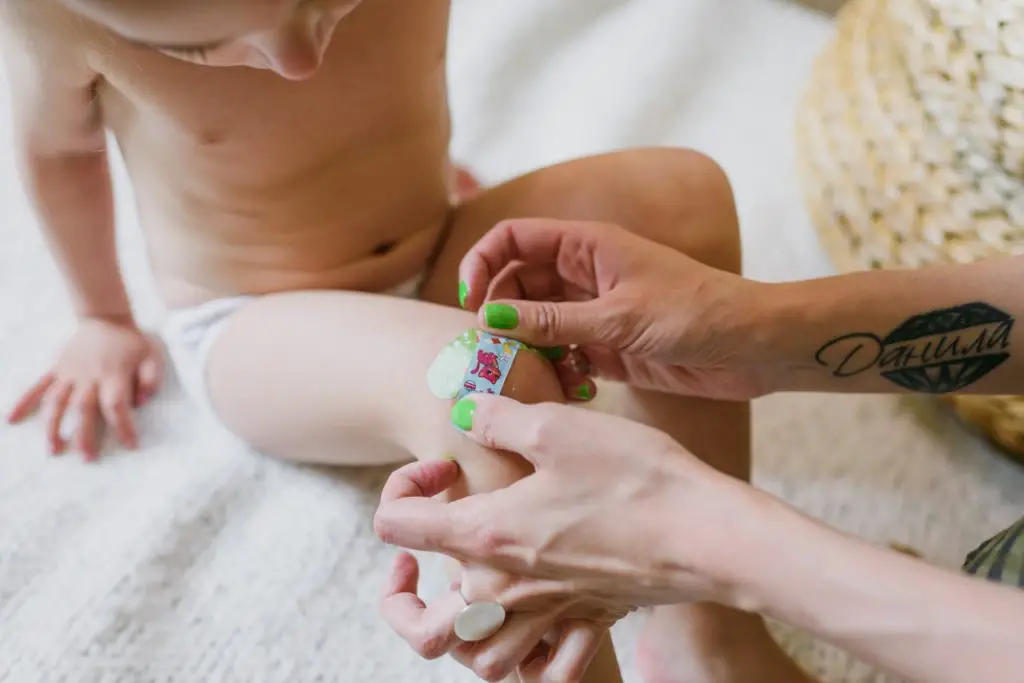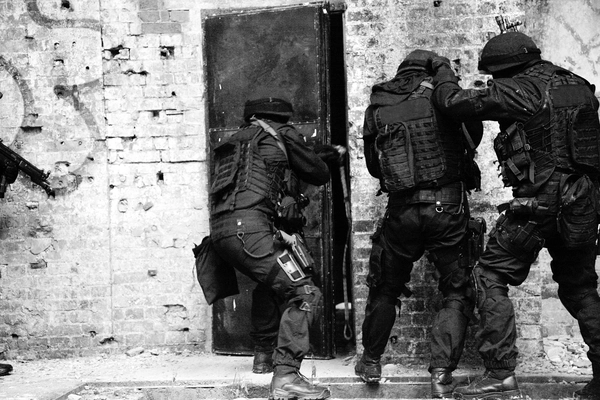Our pets are members of our family, and like our family, we want to be able to take care of them when they need us. Preparing a dog first aid kit for home, the car, or the camper is one of the best steps you can take to be prepared. Many of the issues or injuries your dog will experience are the same as ours, but there are certain items you’ll want to keep on hand specific to your dog’s needs. Below are items you will definitely want to keep on hand in case you need to perform first aid on your dog.
What should be included in a dog first aid kit?
Below is a comprehensive list of all the items you might need to perform basic first aid on your dog. As you’ll see, many of the items overlap with what you would keep in any first aid kit.
Cleaning and Hygiene
- Alcohol Pads – These can be used to clean a wound or sanitize a piece of equipment. They can also be used to sanitize your hands.
- Antibiotic Spray / Ointment – You can get a pet specific version, but something like the original Neosporin works fine. It can be applied to the wound or the bandage.
- Syringe – Not the kind with a needle… Irrigation syringes are great for flushing out wounds and they can also be used to administer liquid medication.
- Saline Solution – Can be used to flush out wounds or an eye. This is different from contact solution. Get the kind without a disinfectant.
- Antiseptic Wash – Chlorhexidine or povidone iodine products are recommended for pets; rubbing alcohol and hydrogen peroxide are not. Use to clean the wound of debris and harmful bacteria.
- Q-tips and Cotton Balls – Always helpful for cleaning and applying medications or creams.
- Artificial Tears – Can help with your pet’s dry eyes. Consult your veterinarian if you think these might be needed.
- Gloves – Keep yourself and your dog safe from bacteria that can lead to infection.
Bandages / Bleeding Control
- Gauze – Just like humans, gauze should be kept on hand to stop bleeding and protect wounds. We suggest keeping both pads and a roll on hand. 3″ x 3″ pads, and a 2″ wide roll are good sizes to start with. You can adjust based on your dog’s size.
- Self Adhering Bandages or “Vet Wrap” – One of the best things to add to your home first aid kit to make it pet friendly. It’s similar to an ACE bandage, but sticks to itself so it wont pull your pet’s fur. You can use it to wrap over gauze or bandages, or you can use it to help immobilize a limb or keep a splint in place. 2″ is a good width.
- Styptic Powder – This can be used for smaller cuts to help quickly stop bleeding. It’s not to be used on deep cuts. Also note that it will sting, so be sure to you’re ready for your pet’s reaction.
- Surgical Glue – Useful in certain situations for smaller wounds and can be much easier than a bandage.
Care and Grooming
- Doggie Nail Clippers or Nail Grinder – Clipping your dog’s nails is always a fun event! You probably already have clippers at home, but they may be good to keep in the car or in your backpack in case your dog tears a nail while out and about. Nail grinders are a great alternative for you and your pet, but they’re not as mobile.
- Paw Cream – Good to keep on hand help soothe your dog’s dry or cracking paws. This commonly occurs in the winter, not unlike our dry skin, but can happen year around.
- Eye Cleaning Pads – Great for regular cleaning of the your dog’s eyes.
- Ear Cleaning Solution – Dog ears accumulate wax and dirt build up over time, especially in dogs with larger ears. A cleaning solution specific for ear care can be dropped into the ears to loosen the build-up. Ear cleaning wipes are another option, but won’t get deep into the ear like a liquid can.
- Brush – Other than for normal grooming, these can help remove burrs, briars, thorns, etc. Wide tooth and metal combs are good for this scenario.
- Doggie / Wet Wipes – These are helpful to keep on hand in case of an accident or vomiting in the car or while traveling. Doggie wipes have the added benefit of being able to be used to clean your dog.
- Shaver – Not only do you want to keep your dog well groomed, but a shaver is useful address a serious laceration. Any electric trimmer can work in a pinch. If you’re hunting, having a cordless version in the truck is a good idea.
Tools
- Tick Puller / Tick Twister – If you’re outside with your dog, you know that they are bound to get ticks eventually. These make tick removal quick and easy.
- Bandage Scissors – Bandage scissors, or any scissors with a blunt tip, will be useful for cutting bandages, tape, or sticky substances from your dog’s hair.
- Tweezers / Hemostats – These are essential for pulling foreign objects from your dog’s ears and nose, or for the removal of thorns and burrs. Hemostats work great for porcupine quills.
- Needle-Nose Pliers or Multi-tool – Also good for pulling quills, and a knife is always handy.
- Wire Nippers – If you’re hiking or hunting, you may find your dog caught in a snare trap or in barbed wire. Be sure that the cutters are strong enough to cut through heavy gauge snare wire.
- Digital Thermometer and Lube – Used to check for fever, hyperthermia or hypothermia. Taking temperature rectally is typical, so having a lube on hand will be needed (Vaseline works well). Remember that a dog’s internal body temperature is different than a human’s!
- Dog First Aid Manual – It’s always good to have a trusted reference on hand.
Treats or Medications
- Calming Chews/Treats – If your dog tends to be anxious, calming chews can help your dog to relax.
- Treats – Also helpful in relaxing or distracting your dog and great for positive reinforcement when they do well.
- Diphenhydramine (Benadryl) – Having a allergy medication on hand is useful for bee stings or other allergies you may not be aware of. Be sure to not use the sinus relief version of the medication. Discuss this with your veterinarian before use to make sure it’s ok and to get the dosing right.
- Hydrogen Peroxide / Activated Charcoal – Only use these at the direction of a veterinarian or poison control. These can be used to promote vomiting. Hydrogen peroxide can also be used for a homemade de-skunking solution. Hydrogen peroxide is not recommended for wound cleaning, however.
- Prescription Medications – Keep a few days worth of prescription medications set aside for emergencies or if you mistakenly run out.
Miscellaneous
- Muzzle – Even the friendliest dog may bite if they are seriously hurt. Be sure to introduce the muzzle to your dog ahead of time and get them comfortable with it.
- Slip Leash – These leashes don’t need a collar and they can be used on your dog or one you may encounter that you want to help. They can even be used as an improvised muzzle or improvised tourniquet.
- Collapsible Bowl / Hydration – Dehydration and heat stroke are some of the most common injuries that may affect your dog.
- Recovery Cone – You may already have one on hand from a previous injury, or you may want to invest in one ahead of time. There are soft cone options that fold up and are easy to store and tend. These tend to be more comfortable, but they can be less effective for determined dogs.
- Splints – You may need to immobilize one of your dog’s legs until you can get help. SAM splints work well or you can improvise.
- De-Skunking Kit – You’ll want something to absorb the oils off the fur, an eye rinse, homemade or store bought shampoo, and rubber gloves. Skunk-Off and Nature’s Miracle are both good products.
- Emergency Blanket – If there is a serious injury and you need to treat your dog for shock, or if it just generally cold, an emergency blanket could be life saving.
- Necessary Paperwork – Keep copies of vaccine records, medical records, and known allergies on hand. Also make sure that you have the number for a pet poison hotline, your vet’s number, and the address of the closest emergency veterinarian hospital, especially if you’re traveling.
- Towel/Blanket – To dry your dog off, provide some padding to lie down on, or help to keep your dog warm.
- Duct Tape – Because what doesn’t it do?
If you’re unsure about putting together a first aid kit yourself, be sure to check out 11 Reasons to DIY a First Aid Kit.
Tips and Precautions
- Take the time to regularly perform a head-to-tail check of your dog. You want to become intimately familiar with them so you’re aware of new lumps, or to find ticks, cuts, etc. The process also gets your dog comfortable with being examined regularly. This may be a good time to introduce your dog to a muzzle or practice bandage wraps.
- Don’t give any drugs to your dog without first discussing it with your veterinarian first. You will want to ensure that the dosing is correct and see if there are any other precautions you need to take. If your vet approves the use of a certain drug, you can keep some pre-portioned and ready to go, especially for travel or hiking kits. For example, you may only need a half a tablet of Benadryl, and cutting a pill in half may be difficult on a road trip.
- Don’t induce vomiting or use substances to do so unless directed by a veterinarian.
- Just like when dealing with humans, remember basic hygiene. Wash your hands before and after any treatment you give.
- We didn’t include tourniquets because they are less effective on dogs than on humans. See this article for a full explanation. If you want to keep one on hand, the SWAT-T style is best as it conforms to the tapered shape of a dog’s leg.
- If your dog is in pain, don’t give them common pain relievers or anti inflammatories like NSAIDs or acetaminophen. See The 10 most dangerious human medications for pets for more information. Be sure to only give them pain relievers approved or prescribed by your vet.




